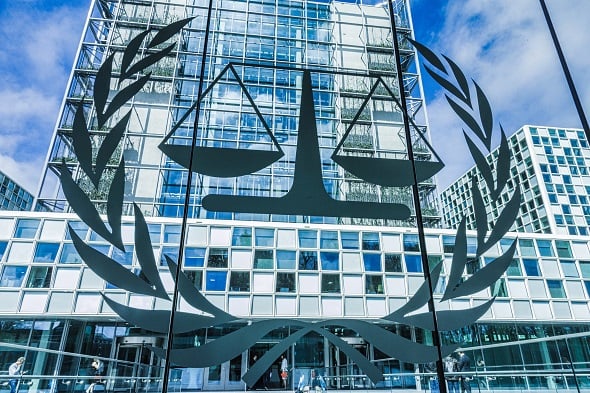A fortnight ago, I published an article on a dismissal by the Amsterdam District Court of all claims of Airbus Investors Recovery Limited. Shortly afterwards, on 20 September 2023, a landmark judgement was delivered by the District Court of The Hague in two collective opt-out proceedings against Airbus. It is the first time that a Dutch court has ruled on the admissibility of claim foundations defending investor losses under the Dutch Act on Collective Damages Claims “WAMCA”.
Both claim foundations were declared inadmissible. One foundation represented too few shareholders (losses) and is therefore not representative. In the case of the other foundation, according to the court, there was insufficient certainty that the interests of the affected shareholders were adequately safeguarded. According to the court, the foundation does not have sufficient experience and expertise, and its governance was not in order. For example, there was too much influence and dependence on the founder and litigation funder(s) that are involved.
1. Key lessons from the judgement
The following are the main lessons that can be drawn from the Hague District Court judgement.

Assessment of the admissibility of a claim foundation under the WAMCA is in principle made on the basis of the situation at the time judgement is sought (ex nunc).
As part of the admissibility test, a claim foundation is required to be sufficiently representative. If a claim foundation (a legal person without members) represents aggrieved investors in listed shares, the following aspects are relevant to determine whether the foundation is sufficiently representative:
- How many investors have registered with the claim foundation;
- What is the extent of their potential damage; and
- How does this compare with the total group of all aggrieved investors (i.e. including those investors that have not signed up with the foundation).
In the present proceedings, it has been determined that if the investors that are registered with a claim foundation represent 5% of the total market losses, this is sufficient to be representative.
If a claim foundation was incorporated by a commercial party that remains involved in WAMCA-proceedings and that commercial party can influence the course of the WAMCA-proceedings and has a financial interest in its outcome, this will be received with significant scrutiny by the court.
Claim foundations do well to organise themselves in such a way that they are absolutely independent from any (commercial) parties that are involved, such as the incorporator of the foundation or a litigation funder. In doing so, it is of great importance that the claim foundation can determine its own course in the litigation and, for example, can also cease the cooperation with the founder should the foundation wish to do so. In addition to being sufficiently independent, the board and supervisory board of the claim foundation must also be sufficiently competent to adequately represent the interests of aggrieved claimants and must be sufficiently staffed to do so by (also) having their own organisation, employees and advisors available.
In this instance, the judgement was sceptical, almost to the point of being sarcastic, and in my opinion, it was sending a clear signal from the court.
Claim foundations are allowed to make use of litigation funding and can cooperate with commercial parties, but if a claims foundation is set up by a commercial party (e.g. a litigation financier), and does not engage itself in any other activities besides litigation, plus lacks sufficient independence from the commercial party or parties involved in the WAMCA-proceedings, then there is no place for such a claim foundation in the opt-out system of WAMCA-proceedings.
2. Three collective actions against Airbus over investor losses
There are currently three collective securities litigations against Airbus in the Netherlands.

In the proceedings of Airbus Investors Recovery Limited ("AIRL"), the Amsterdam District Court ruled in its judgement of 30 August 2023 that investors were ‘timely and correctly informed by Airbus about the corruption scandal’ and as a result, all of AIRL's claims were dismissed. For a more in-depth analysis of this judgement, please read the article I published a fortnight ago.
In addition to AIRL's proceedings, two WAMCA-proceedings are also pending against Airbus.
- The proceedings of "Airbus Investors Recovery Foundation" ("AIRS"); and
- The proceedings of "Investor Loss Compensation Foundation" ("SILC").
Both these WAMCA-proceedings address (largely) the same facts and allegations that were raised in the AIRL proceedings.
3. The Hague District Court rules on two WAMCA proceedings
Since the Dutch Act on Collective Damages Claims (WAMCA) came into force in 2020, it is possible for foundations to collectively claim damages on behalf of all aggrieved investors. It is no longer required that all aggrieved investors must register with the claim foundation. The claim foundation can represent the class on opt-out basis. However, under the penalty of being declared inadmissibility, the claim foundation must prove that it is sufficiently representative. To demonstrate this, it is important that the foundation can evidence that a sufficient number of aggrieved investors support its action.
In addition to the representativeness requirement, several other admissibility requirements apply, such as regarding the expertise and experience of the foundation and its governance. An important governance requirement is whether the foundation is sufficiently independent from other (commercial) parties involved in the proceedings, such as a litigation funder.
The judgement of 20 September 2023 by the District Court of The Hague (the "Court") offers several interesting points of view, some of which are discussed below.
3.1 Admissibility test based on the situation at the time of passing judgement
A first important general consideration in the judgment is that the admissibility test of a claim foundation is, in principle, based on the situation at the time when judgment is sought (in short, admissibility test ex nunc). The admissibility test is not carried out (solely) on the basis of the facts and circumstances as set out in the summons (ex tunc).
3.2 Representativeness test: insufficient support base leads to inadmissibility
From the legislative history of the WAMCA, the Court deduces that for the present case, the following criteria are relevant under the representativeness test:
- How many investors have registered with the claim foundation;
- What is the extent of their potential damage; and
- How does this compare with the total group of all aggrieved investors (i.e. including those investors that have not signed up with the foundation).
Claim foundation AIRS mentioned that over 420 of primarily retail investors have registered with AIRS and less than 10 institutional investors. It is not in dispute that this makes the number of investors affiliated to AIRS less than 0.1% out of the total number of investors. This, according to the court, is negligible. In addition, AIRS also failed to state the number of shares represented by investors registered with AIRS and neither mentioned the size of their claims. However, AIRS should have done this, according to the Court.
Based on this, the Court concludes that AIRS is not sufficiently representative and, as a result, the interests of investors represented by AIRS are insufficiently safeguarded. The requirement of representativeness is an important admissibility condition. The Court, therefore, finds that AIRS is inadmissible in its claims.
Claim foundation SILC stated that it represents a group of 157 registered institutional investors and about 500 retail investors. SILC argued that the institutional investors were estimated to have suffered 5% of the total damages. The Court ruled that 157 affiliated institutional investors is substantial and that it has no doubt that those investors indeed suffered 5% of the total damages. The Court then concluded that 5% is sufficient for SILC to be considered representative. Thus, unlike AIRS, SILC does meet this criteria.
3.3 Sufficiently safeguarding of investors' interests by SILC?
Since AIRS was not sufficiently representative, and was declared inadmissible on that ground, the test for further admissibility requirements under the WAMCA was only applied for SILC. The Court ruled as follows.
SILC is an ad hoc claims foundation that does not seek financial contributions from its registered investors. This makes SILC entirely dependent on its litigation funder(s) for its funding. Initially, SILC was funded by its founder, a law firm, with which it still cooperates, and the said founder is also part of the funding agreement that was subsequently concluded with an internationally operating litigation funder. Given these circumstances, the Court believes that it is important to apply extra scrutiny by carefully examining whether SILC has put the interests of the investors, that it represents, first.
The Court notes that, apart from conducting these proceedings, SILC does not appear to carry out any other activities where it promotes the interests of aggrieved investors.
For instance, it emerged that it was not actually SILC, but instead its founder, that takes care of, among other things, attracting participants, collecting evidence and bringing lawsuits. However, according to the Court, these are activities that SILC should not just perform itself, but also have overall control. Since SILC does not have its own organisation, its own employees and its own advisers, it concluded that SILC cannot carry out those activities itself because it lacks the necessary knowledge, resources and experience to do so.

Following these conclusions, the Court also conducted a detailed analysis of SILC’s governance. An initial finding is that SILC's Supervisory Board ("SB") has a very far-reaching degree of control within SILC and that two of the three members of the SB have close links to SILC's founder and litigation funder(s). With that, it takes "little imagination", the court said, to assume that there is a real risk of SILC's actions being influenced by the founder and the litigation financier(s) for their own interests.
This is problematic because control of the WAMCA proceedings should lie sufficiently with SILC.
In addition, the Court found that SILC is obliged to consult the founder and litigation financier(s), among others, prior to entering into a settlement. This also allows them to directly influence SILC's decision-making process.
SILC is also substantially dependent on its founder. As a result of the remuneration owed to the founder, which remains intact in the event of termination of the cooperation, SILC in principle cannot terminate the cooperation with its founder should it wish to do so.
Finally, the Court ruled that SILC's board lacked experience and expertise regarding instituting and conducting the WAMCA-proceedings.
The Court's final final conclusion is as follows. SILC
- actually carries out virtually no activities of its own and
- has given a power of attorney to its founder to carry out the (essential) activities in the context of the proceedings,
- its founder and litigation funder(s) can jointly exert decisive influence on SILC's decision-making and
- it is insufficiently certain whether SILC prioritises the interests of aggrieved investors.
The Court states "there appears to be an empty shell", set up by the founder and litigation funder(s), to conduct these proceedings against Airbus. This is not what the legislature has deemed desirable and permissible.
SILC is therefore declared inadmissible in its claims because the aggrieved investors’ interests that SILC purports to represent are not sufficiently safeguarded.





